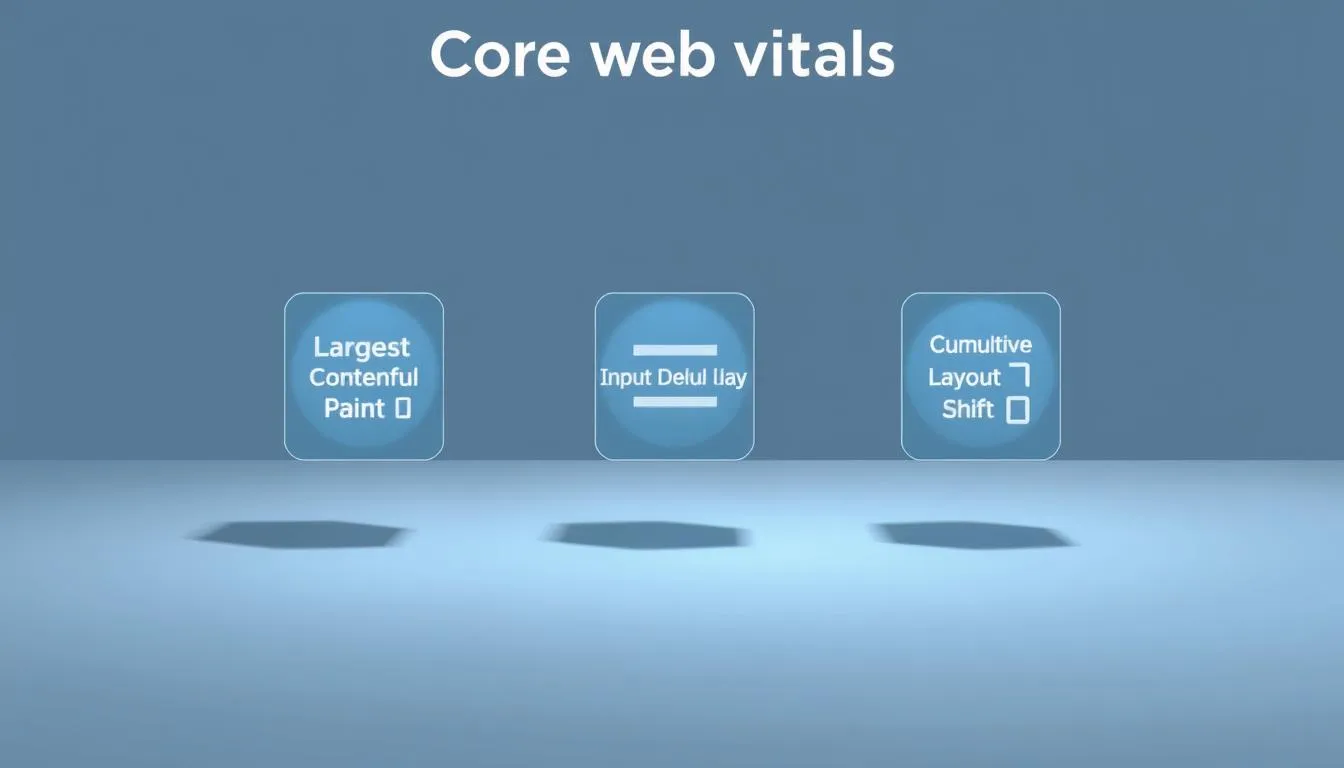Over half of the value in organic listings comes from how people behave after they land, not just how pages are found. That shift means SEO is about discovery and what happens next.
Search now links content visibility to how visitors engage. Google says its systems weigh relevance, usability, expertise, and settings, and they use aggregated interaction data to train models that estimate relevance.
Technical checks still matter, but page usability can tilt outcomes when other factors are close. Better speed, clarity, and stability help both conversions and long-term visibility.
Think of engagement as a feedback loop: people signal which information is helpful, and search engines use that data to surface stronger pages. This guide will cover intent, Core Web Vitals, on-page patterns, measurement workflows, and mobile-first architecture.
Our aim is practical. We translate complex discussions into steps teams can use to align content, design, product, and engineering roadmaps.
Key Takeaways
- Engagement after discovery influences how pages perform in search.
- Google combines relevance, usability, expertise, and context in its systems.
- Page speed, clarity, and visual stability compound across metrics.
- Measure with Search Console, analytics, A/B tests, and heatmaps.
- Focus on practical steps that link content and technical teams.
Why UX signals matter for SEO right now
Actions people take after landing on a page are teaching search systems what content deserves prominence. Google says it uses relevance, usability, and expertise plus aggregated interaction data to estimate what helps people find the right information.
When visitors click, scroll, and follow navigation paths, search engines use those patterns to learn which pages satisfy intent. Improving content clarity, layout, and navigation helps people complete tasks faster and reduces friction. That often correlates with stronger engagement and higher visibility in search results.
This isnt about gaming metrics. Natural user signals emerge when pages match intent and give the right depth of content at the right moment. Fast loads, stable layouts, and intuitive flows create positive patterns that search engines interpret as useful.
- Design for task completion: clearer headings and simpler flows speed decisions.
- Measure behavior: clicks, scrolls, and paths reveal friction points.
- Invest broadly: speed, accessibility, and readability compound across discovery and trust.
Understanding search intent and how UX signals reflect it
Matching content to the likely intent behind a search transforms clicks into useful interactions. This ties query language, page layout, and on-page elements to measurable behavior.

From query intent to content satisfaction: connecting the dots
Intent falls into four practical types: informational, navigational, transactional, and local.
- Informational: concise answers or how-to steps for quick queries.
- Navigational: clear brand or product pages that match specific queries.
- Transactional: purchase-focused pages with pricing and CTAs.
- Local: location details, hours, and maps for nearby queries.
Aligning layout and messaging to each type helps people find answers quickly. Faster success often leads to longer visits, more scroll depth, and internal link clickssignals that the content matched intent.
Aggregated interaction data and what it implies for relevance
Google builds language models to interpret intent and uses on-page keywords as basic relevance markers.
“We also use aggregated and anonymized interaction data to assess whether search results are relevant to queries.”
That anonymized data helps models learn which pages truly satisfy queries at scale.
| Intent Type | Content Focus | Layout Priority |
|---|---|---|
| Informational | Quick answer, step-by-step guide | Short intro, clear headings, examples |
| Navigational | Brand/product landing content | Prominent name, search box, links |
| Transactional | Pricing, benefits, simple CTA | Prominent CTA, trust signals, FAQs |
| Local | Address, hours, directions | Map, contact, nearby context |
Example: a change laptop brightness query maps to a short tutorial titled adjust laptop brightness. Synonyms and semantics let models match those pages even when wording differs.
Practical tip: map top queries to journeys, front-load answers in headings, then measure fit by comparing query words to on-page headings and tracking scroll depth and internal clicks.
What Google confirms versus whats debated about user signals
Not every engagement metric carries equal weight; some are confirmed while others stay speculative. Google states it considers relevance, usability, and quality signals like E-E-A-T when evaluating pages. The company also uses aggregated interaction data and large-scale experiments to validate changes in search.
Confirmed:
- Relevance and clear content that matches queries.
- Usability and page experience factors such as speed and stability.
- Expertise, authoritativeness, and trustworthiness (E-E-A-T).
Debated: Click-through rate, dwell time, and bounce rate are widely discussed by practitioners. Google has not explicitly labeled these as a direct ranking factor, so treat them as diagnostic metrics rather than proof of causation.
“Aggregated interaction data helps systems estimate relevance, but isolated metrics rarely explain whether search results changed.”
Practical takeaway: avoid trying to game vanity numbers. Fix core issuesrelevance gaps, confusing design, slow pagesand monitor data across discovery, engagement, and conversions. For deeper reading on click behavior and debate around metrics, see user click data as a topic.
Core Web Vitals best practices to enhance overall user experience
Core web vitals are measurable targets that guide fast, stable, and responsive pages. Teams should set speed budgets per template and track field data so improvements reflect actual conditions.

Improve Largest Contentful Paint
LCP should occur within 2.5s. Compress and properly size images. Use modern formats like AVIF or WebP. Defer non-critical JS and CSS.
Practical steps: enable server-side and CDN caching, preconnect to critical origins, and prioritize above-the-fold assets.
Stabilize layouts to reduce CLS
CLS target is 0.1. Reserve space for images, ads, and embeds. Define width and height or use aspect-ratio CSS.
Tip: avoid injecting content above visible elements and load fonts in a way that minimizes layout jumps.
Optimize interactivity beyond FID/INP
FID goal is 100ms, but reduce long tasks for better responsiveness. Split code, remove unused scripts, and progressively enhance features for low-power devices.
Set SLAs for key page types and add automated performance checks in CI/CD to track regressions.
| Metric | Target | Action |
|---|---|---|
| LCP | <= 2.5s | Optimize media, cache, prioritize critical render |
| FID / INP | <= 100ms / low INP | Code-splitting, reduce JS, eliminate long tasks |
| CLS | <= 0.1 | Reserve space, size assets, control late-loading embeds |
user experience ranking signals in context
Interaction cues act as directional indicators that help search systems learn which pages satisfy intent. These cues add useful context to classic relevance checks and help teams prioritize fixes that matter.
How interaction cues help assess whether results match intent
Aggregated and anonymized interaction data lets search engines estimate relevance at scale. When patterns show fast task completion and low friction, systems use that evidence to assess whether a result met the query.
Practical point: treat these indicators as directional, not absolute. They point to problems or strengths you can test and fix.
Balancing engagement with content quality, expertise, and trust
High-quality content that answers questions with the right depth naturally generates positive engagement. EEAT elevates credibility; pairing expertise with clarity, speed, and accessibility improves both perceived usefulness and measurable behaviors.
- Frame interaction cues as guides for search engines, not goals themselves.
- Pair strong content with clear author attribution and cited sources to show trust.
- When comparable pages compete, superior usability can differentiate your page.
- Set a content review cadence to keep information accurate and aligned with intent.
For a practical primer on interpreting aggregated behavior, see the user signals guide.
Designing content that aligns with user intent and boosts engagement
Begin with audience research to identify user search intent and shape headlines, intros, and subheads around the core question people bring to the page.

Match topics, keywords, and structure to the query context
Map top queries to page goals and include the primary keyword in headings and body where natural. Google treats keyword presence in headings as a basic relevance marker, so use it to clarify intent.
Write for scannability: headings, visuals, and internal links
Use descriptive H2s and H3s, short summaries, bullets, and clear visuals to help readers grasp takeaways quickly.
Link related pages with descriptive anchor text to guide deeper reading and reduce dead ends. Contentsquare finds that better internal linking and formatting raise dwell time and cross-page engagement.
Demonstrate experience and expertise to earn trust and links
Provide real examples, data, and citations to show authority. Add author bios with credentials, update dates, and references to reputable sources to reinforce credibility.
Balance depth and clarity: cover essential details without fluff. That keeps attention, encourages sharing, and makes pages useful to both readers and search systems.
Measuring user behavior: tools, data, and testing workflows
Start with what you can measure today: Google Search Console gives CTR per query, page, and device. Use that to spot mismatches where impressions are high but clicks are low, then refine titles and descriptions to improve appeal.
In analytics, track bounce rates, time-on-page, and pages per session as proxies for dwell. Pair those metrics with scroll depth to see if information is actually consumed.
Journey and path analysis
Map common routes to find high-exit intersections. Visualizing paths shows where friction or missing answers cause drops. Combine pathing with heatmaps and session replays to learn the “why.”
A/B testing and interpretation
Run A/B testing with proper randomization, minimum sample sizes, and a clear primary metric. Use heatmaps to explain wins and refine hypotheses.
Turn findings into action
Translate results into a prioritized backlog using effort/impact scoring, owners, and success metrics. Close the loop by re-measuring after launches to confirm that changes improved both engagement and search outcomes.
On-page UX patterns that reduce high bounce rates and increase dwell time
Above-the-fold clarity matters. A fast, stable header and a promise-keeping headline tell visitors in seconds they found the right page. Contentsquare defines bounce rate as people leaving within 10 seconds with no conversion or second page view, so speed and relevance are critical.
Fast, clear, and relevant above-the-fold experiences
Place the core answer or summary at the top. Make CTAs and key links visible without scrolling.
Intent-led navigation, related links, and content layering
Use contextual links to guide readers to related pages. Layer details below the fold so scanners and deep readers both find what they need.
Forms that convert: simplify, reduce fields, clarify value
Simplify forms by removing nonessential fields and cutting steps. Add inline validation and clear labels to reduce abandonment.
| Pattern | Purpose | Quick Fixes | Impact |
|---|---|---|---|
| Fast header | Immediate clarity | Compress hero images, preload fonts | Lower bounce rate |
| Answer-first layout | Reduce time to value | Put summary above fold, strong H1 | Increase dwell time |
| Contextual links | Encourage exploration | Related articles, clear anchors | More pages per visit |
| Simple forms | Improve conversions | Fewer fields, accessible labels | Fewer exits |
Mobile-first performance, accessibility, and site architecture
Designing for small screens means prioritizing speed, clarity, and simple navigation from the start. A phone-first approach ensures each page loads quickly and reads clearly without zooming.
Responsive design that loads quickly and reads clearly
Build templates that adapt fluidly so text stays legible and touch controls are easy to reach. Prioritize critical assets and defer nonessential scripts to keep interaction snappy.
Optimize images with compression and lazy loading, minimize JavaScript, and use fast servers or CDNs. Align these steps with core web vitals targets like LCP and INP to measure real mobile gains.
Information architecture that supports discovery and indexing
Use clear navigation labels, consistent URL patterns, and breadcrumb trails so people and search engines can find key information. Surface cornerstone pages with internal links so important pages arent buried.
| Focus | Mobile fix | Accessibility | Search impact |
|---|---|---|---|
| Layout | Fluid grids, readable fonts | Keyboard nav, ARIA landmarks | Better crawl understanding |
| Performance | Image compress, lazy load | Alt text, contrast | Improved google search visibility |
| Content | Answer-first, short headers | Semantic HTML | Easier indexing by search engines |
| Forms & CTAs | One-tap inputs, fewer fields | Labels, inline errors | Higher conversions and lower exits |
Validate mobile UX with device labs and field data to confirm improvements under real conditions. That keeps your web pages fast, accessible, and easy to index.
Conclusion
Focus on practical wins: improve clarity, cut load times, and remove friction so engagement improves naturally over time.
Align content with search intent and make pages answer queries quickly. Pair clear writing with fast, stable layouts and measure real behavior with field data.
Remember: some metrics are debated as direct ranking factors, but enhancing overall experience reliably lifts visibility and business outcomes.
Adopt a simple cadence: research intent, ship improvements, measure, test, and iterate. Track core web vitals, dwell time, bounce rate, and conversion rates.
Challenge: pick two high-impact templates, improve performance and clarity, add helpful internal links, and measure results across deployments. Work cross-functionally to scale gains.
FAQ
What are the main UX ranking signals that affect SEO today?
Google emphasizes relevance, page experience, and EEAT (experience, expertise, authoritativeness, trustworthiness). Core Web VitalsLargest Contentful Paint, Cumulative Layout Shift, and interaction metricsalso matter. While click-through rates and bounce metrics are debated as direct factors, they still offer useful feedback on how well a page satisfies queries.
How do search intent and interaction data connect to better search results?
Intent guides what people look for, and aggregated interaction data (clicks, time on page, paths) shows whether content satisfies that intent. When many visitors find relevant, useful content and take expected actions, signals indicate the page matches the query, helping search engines surface it more often.
Are click-through rate, dwell time, and bounce rate confirmed ranking factors?
These metrics are debated. Google has said it uses a range of aggregated signals, but it avoids relying on noisy, easy-to-manipulate metrics alone. Treat CTR, dwell proxies, and bounce rate as diagnostic tools to improve page relevance and usability rather than as levers to directly game rankings.
What practical steps should I take to improve Core Web Vitals?
Prioritize loading speed, compress and lazy-load large media, implement caching and a CDN, and set performance budgets. Reduce layout shifts by reserving image sizes and sizing for ads. Improve interactivity by optimizing JavaScript and using techniques that lower input delay.
How do I balance technical signals with content quality and trust?
Technical performance helps users reach and stay on pages, but quality, accurate information, and clear authorship earn credibility and links. Optimize both: fast, accessible pages that demonstrate expertise and provide comprehensive, intent-focused answers.
Which analytics and testing methods reveal real friction points?
Use web analytics to track CTR, pages per session, bounce rates, and time-based engagement metrics. Combine that with path analysis and session recordings to spot drop-offs. Run A/B tests for layouts, CTAs, and forms and translate results into a prioritized backlog with clear success metrics.
How should content be structured to match query context and boost engagement?
Match headings and subtopics to what users expect, use scannable layouts with clear headings, bullet lists, and visuals, and link related pages to keep visitors exploring. Demonstrate experience and expertise through examples, case studies, and transparent sourcing.
What on-page patterns lower bounce rates and increase dwell time?
Ensure fast, relevant abovethefold content, add intentled navigation and related links, and layer content so visitors can go deeper. Simplify forms, clarify the value of actions, and use clear calls to action that match user intent.
How important is mobile-first design and site architecture for search?
Critical. Responsive design that reads well and loads quickly on phones improves engagement and indexing. A clear information architecture helps discovery, crawling, and internal linking, supporting both performance and relevance in search results.
How can I measure improvements and show ROI from UX changes?
Track baseline metrics (CTR, conversion rate, pages per session, Core Web Vitals) and monitor changes after experiments. Use A/B testing with adequate sample sizes and measure business outcomes like conversions and revenue to demonstrate ROI.
